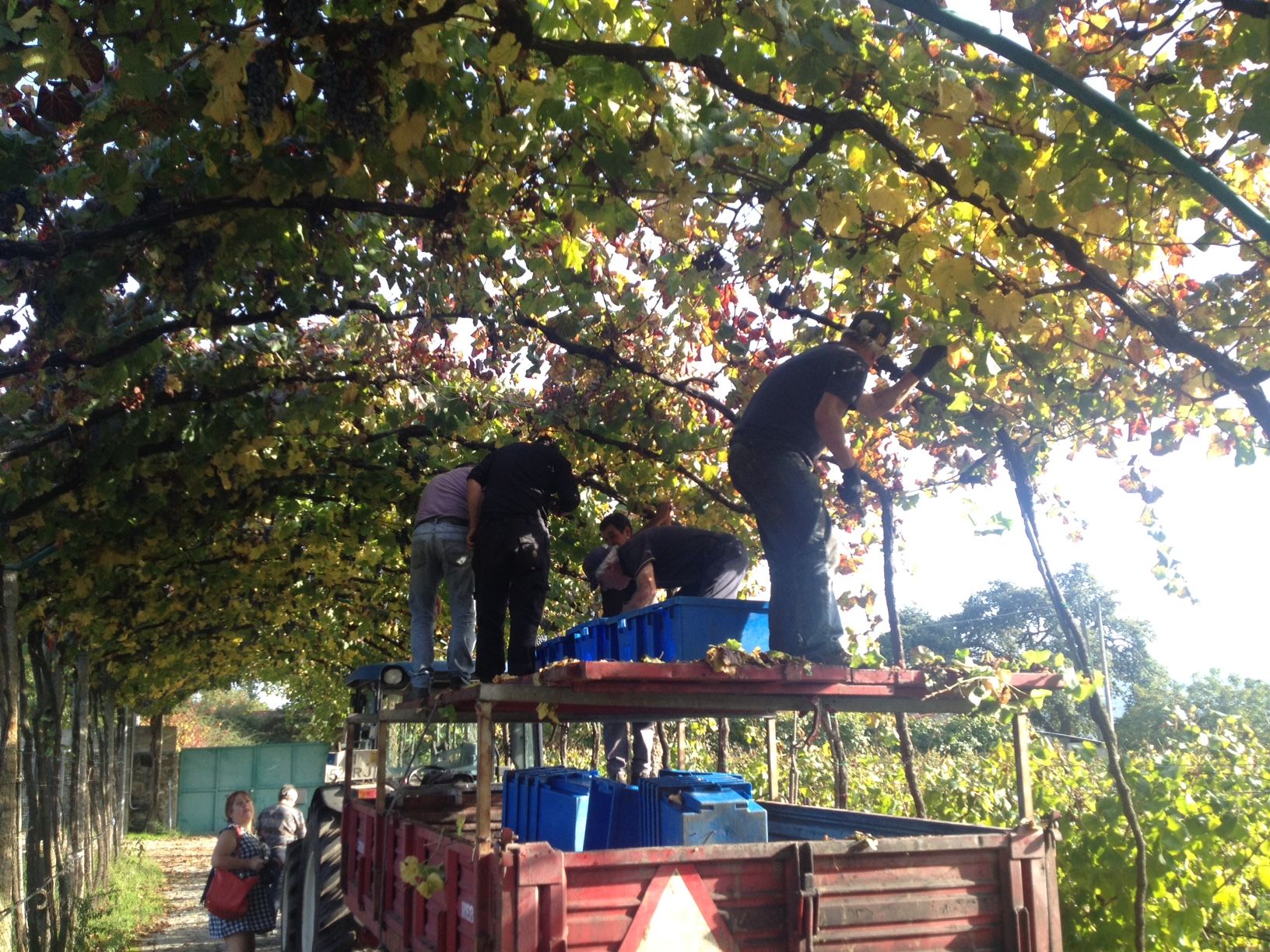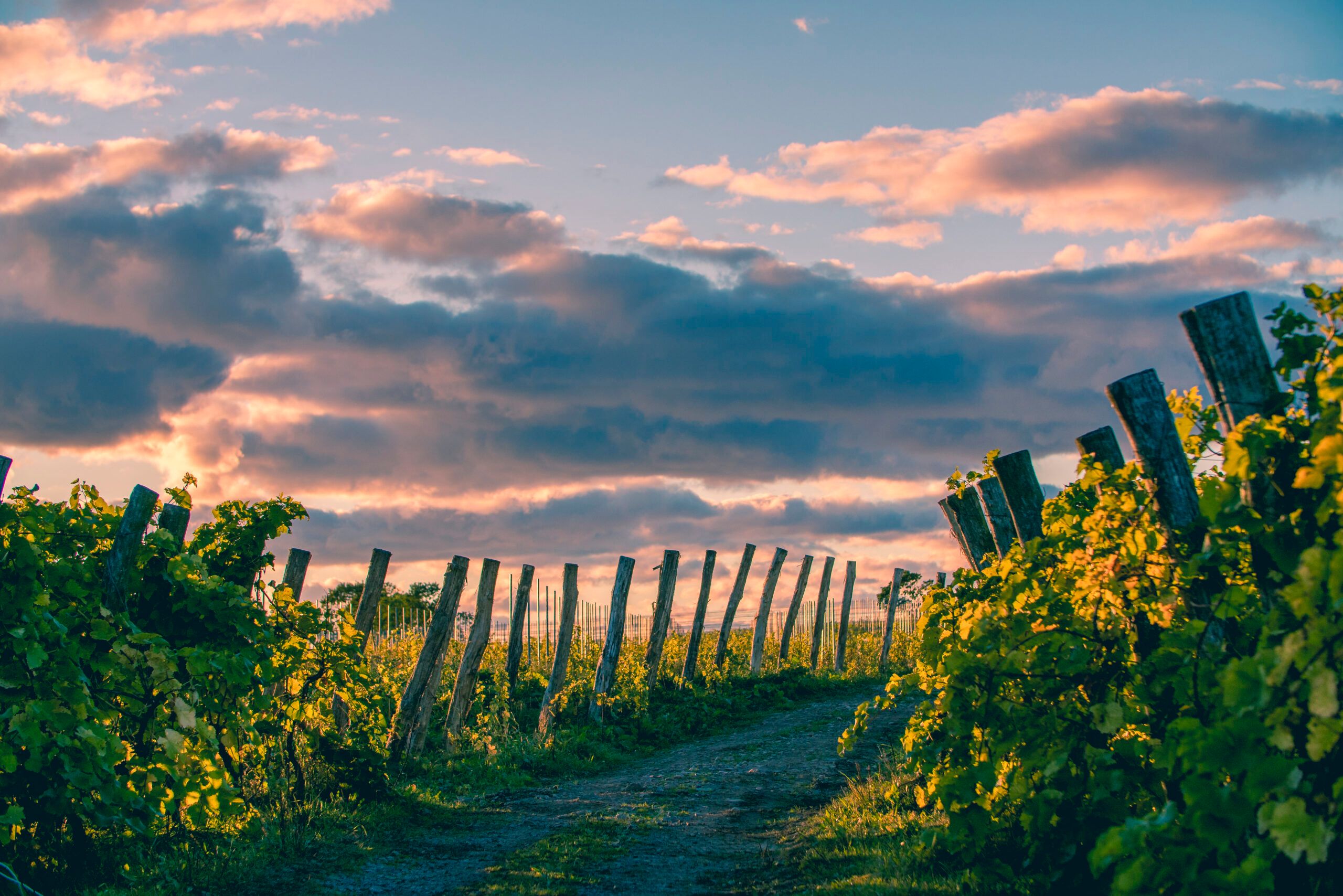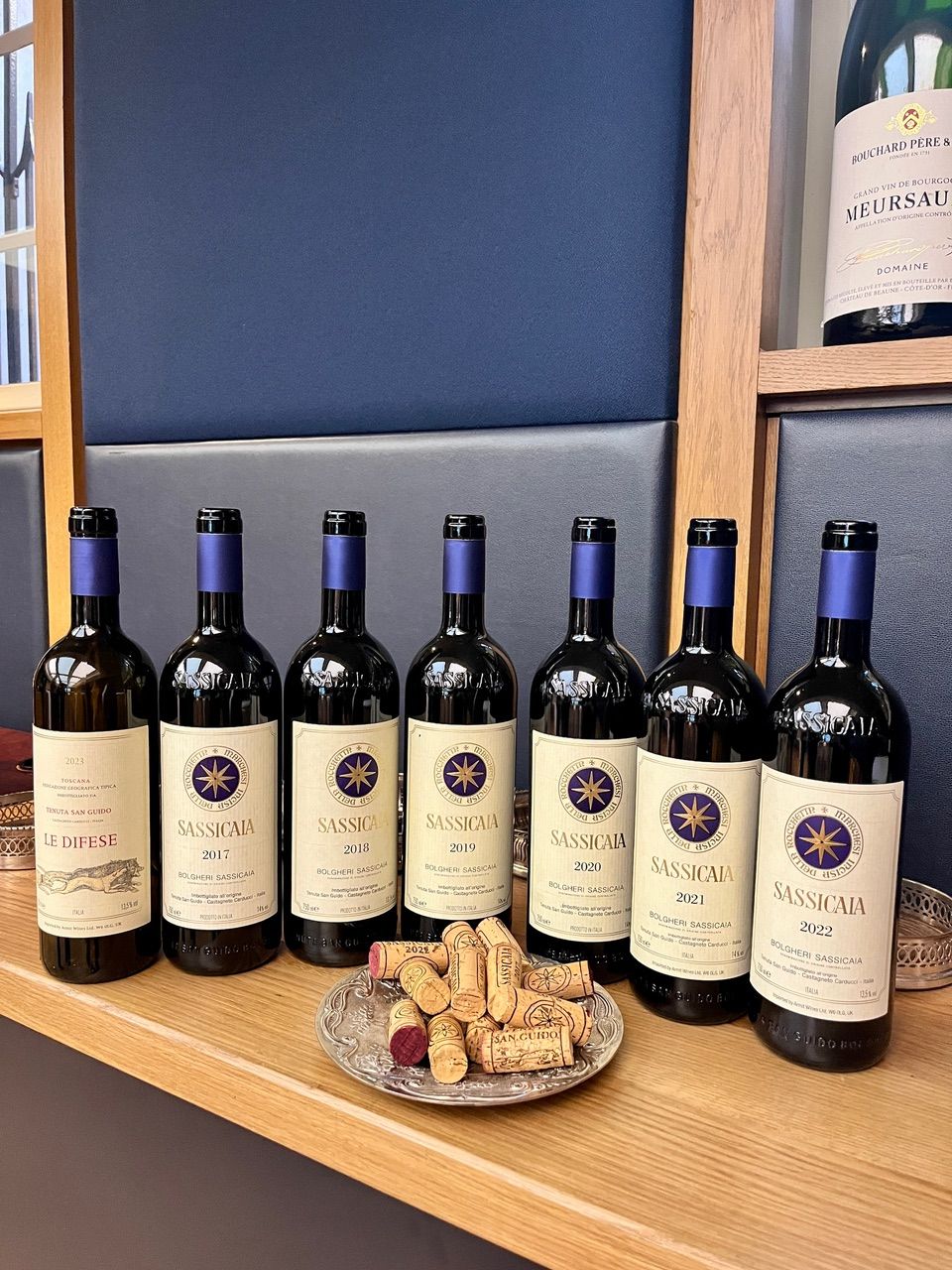The Buyer on the road, visiting Vinho Verde producers Anselmo Mendes, Quinta da Lixa, Quinta da Calcada, Adega and Quinta de Gomariz discovering those doing extraordinary things with local grapes Loureiro, Avesso, Alvarinho and Trajadura.
The quality of Vinho Verde wines in northern Portugal has never been higher, as The Buyer found in a post-harvest visit to the region.
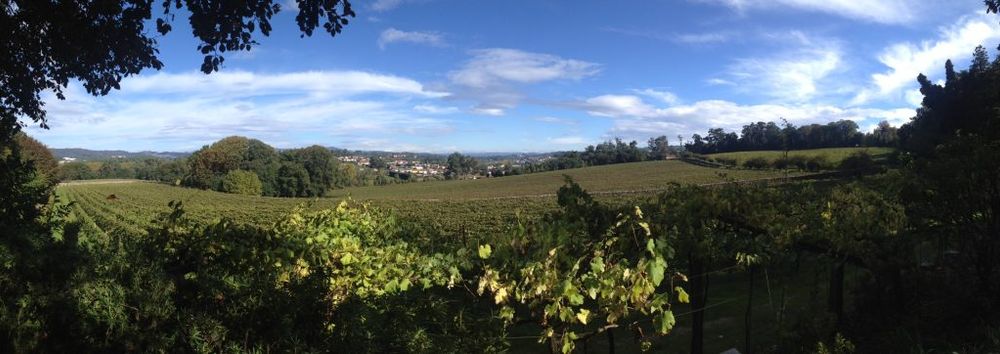
A typical post-harvest scene in Northern Portugal
Equally good news for drinkers and the trade alike is the many different styles of Vinho Verde that are being made. Those people that like the traditional off-dry quaffer with a bit of spritz can still find that style, but others who are looking for dry mid-market or premium single varietals will not be disappointed either.
Indeed, the range of wines in Portugal’s biggest white wine region is delightfully extensive, offering excellent value for money at a time when British consumers will increasingly search for it as sterling weakens.
Exports of Vinho Verde have been steadily rising over the last ten years or so, with 43% of wine made in the region in 2015 going overseas (compared to 15% in 2003).
The United States is its number one overseas market, ahead of Germany, France and Brazil, while Britain trails behind in seventh place. Several leading producers in Vinho Verde are keen, however, to boost sales to the UK.
One of the most interesting producers in the appellation
Anselmo Mendes is one.
His dozen or so labels are among the appellation’s best and most interesting, featuring as many as seven different styles of single varietal Alvarinho.

The serious work begins
These include a couple of examples aged in stainless steel for four months on the lees with batonnage; another pair aged for six months in used French oak of differing ages; another aged for 9 months in used oak that went through partial malolactic fermentation; another oxidatively aged; and finally the flagship, always from the best parcel of fruit, that sees some new oak.
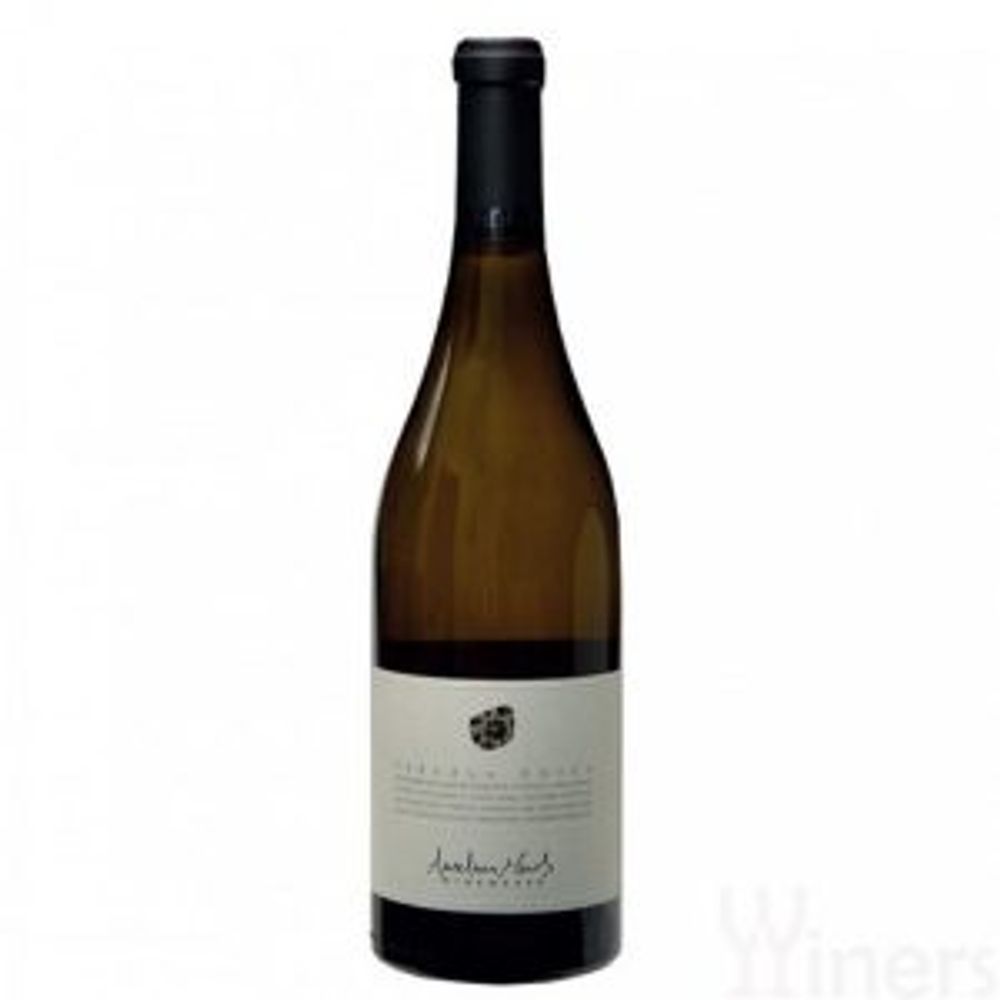
This last wine, known as Parcela Unica, sells for around €30 and is both complex and multilayered.
Mendes, a talented and well-known producer with vineyards in three sub-regions of Vinho Verde, also makes three very drinkable everyday wines with his Muros Antigos labels – a single varietal Loureiro (the most planted white grape in the denomination), an Avesso, and a blend of the above two and Alvarinho.
Loureiro is known for its freshness, exuberance and floral nose, while Avesso, also fresh, has light citrus notes. Alvarinho, higher in alcohol, acidity and body, is potentially the most complex of the three.
The UK market is becoming increasingly important t0 winemakers
Aveleda, the biggest producer of Vinho Verde with 16 million bottles in 2015, exported only 20,000 of those to the UK last year but that will rise to around 24,000 this year.
“We want freshness and crispness in our wines,” Pedro da Costa, the company’s marketing manager, told The Buyer. “We like to harvest at lower alcohol levels to get crisp acidity and more longevity.”
His goals include to find a new UK distributor, and to increase annual production to 20 million bottles by 2020.
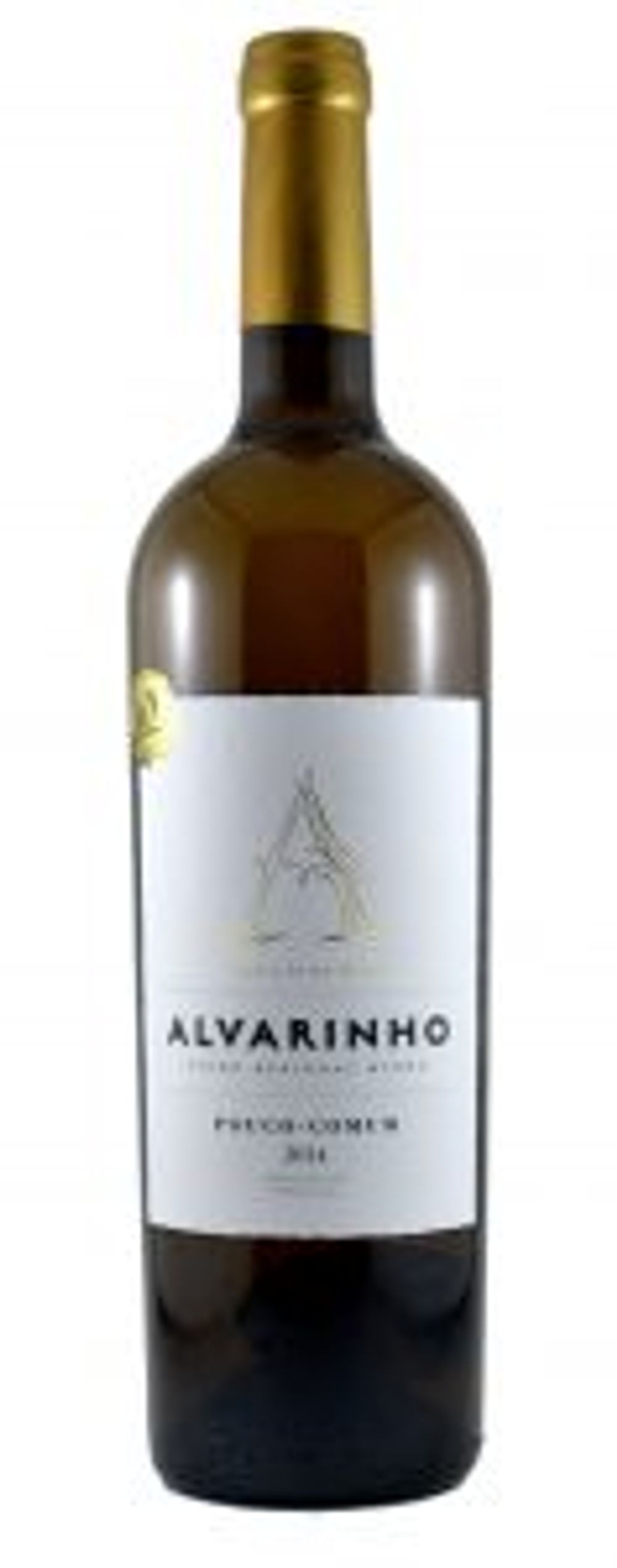
Carlos Teixeira, the highly capable winemaker for Quinta da Lixa, another substantial producer whose output this year will reach 4.2 million bottles, fashions the highly successful ‘Pouco Comum’ brand (translation: ‘Uncommon’). A single varietal dry Alvarinho (only 3g/l of residual sugar), it is superb value at £8.99, with 12,000 bottles sold annually in the UK through Enotria.
Teixeira likes the added complexity that Trajadura brings in a 50/50 blend with Alvarinho to the ‘Aromas das Castas’ label.
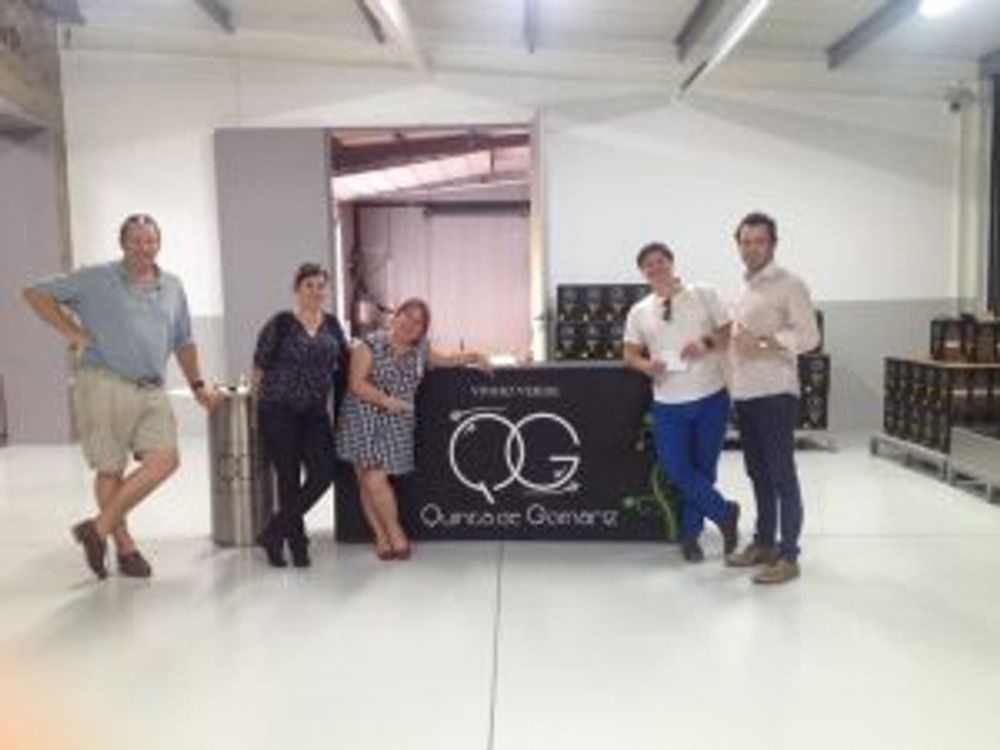
Geoffrey Dean (far left) and the rest of the UK delegates in Vinho Verde country
That is not yet available in the UK, but he hopes it will soon be, and help to double current exports to Britain. Just over half of Quinta da Lixa’s production is exported to as many as 34 countries.
Quinta da Calcada, which was established in 1917 and owns a half-acre plot in the hills near the Douro Valley that is the oldest in Vinho Verde, is seeking to regain old export markets lost.
The quality of its wines is not in doubt, nor is the winery’s superb hotel and Michelin-starred restaurant. About 10,000 of their 450,000 bottles produced last year were exported to the UK through its distributor, Perfect Cellar, and the company’s aim is to raise that.
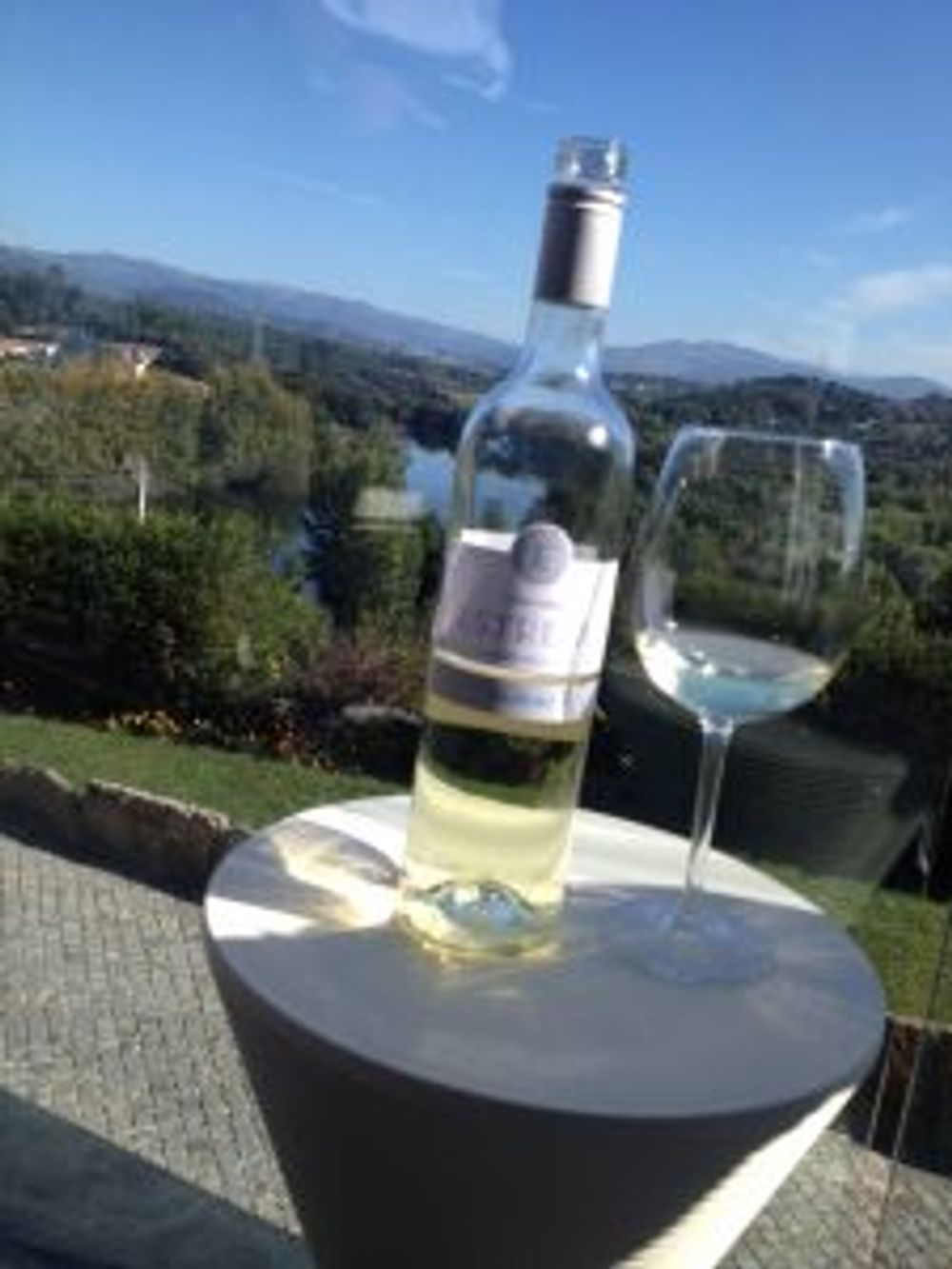
A bottle of Vinho Verde yesterday
Two other producers are also hoping for increased exports to Britain. The Viniverde, which is a cooperative based in the pretty town of Ponte da Barca, takes in fruit from 1,000 growers and makes the popular Estreia brand.
The aim is to double its annual UK sales of 4,000 bottles, with its single varietal Loureiro being a value best-seller at around £9 RRP.
Likewise, the much-smaller Quinta de Gomariz, located near Porto, farms organically and produces a range that is excellent value.
Indeed, its motto of ‘Tradition and Innovation’ is one that could be more generally applied to the whole region as it seeks to increase its market share outside Portugal.
